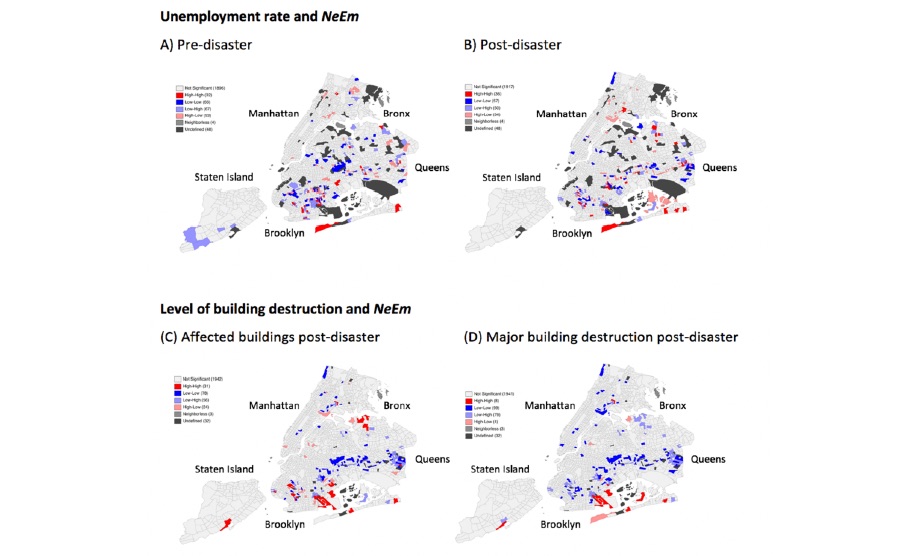New Publication
Space-Time Dependence of Emotions on Twitter after a Natural Disaster
Int. J. Environ. Res. Public Health
https://doi.org

Sonja I. Garske, Suzanne Elayan, Martin Sykora, Tamar Edry, Linus B. Grabenhenrich, Sandro Galea, Sarah R. Lowe and Oliver Gruebner
Abstract
Natural disasters can have significant consequences for population mental health. Using a digital spatial epidemiologic approach, this study documents emotional changes over space and time in the context of a large-scale disaster. Our aims were to (a) explore the spatial distribution of negative emotional expressions of Twitter users before, during, and after Superstorm Sandy in New York City (NYC) in 2012 and (b) examine potential correlations between socioeconomic status and infrastructural damage with negative emotional expressions across NYC census tracts over time. A total of 984,311 geo-referenced tweets with negative basic emotions (anger, disgust, fear, sadness, shame) were collected and assigned to the census tracts within NYC boroughs between 8 October and 18 November 2012. Global and local univariate and bivariate Moran’s I statistics were used to analyze the data. We found local spatial clusters of all negative emotions over all disaster periods. Socioeconomic status and infrastructural damage were predominantly correlated with disgust, fear, and shame post-disaster. We identified spatial clusters of emotional reactions during and in the aftermath of a large-scale disaster that could help provide guidance about where immediate and long-term relief measures are needed the most, if transferred to similar events and on comparable data worldwide.